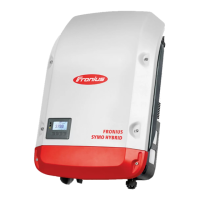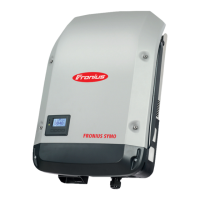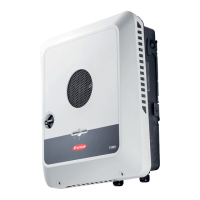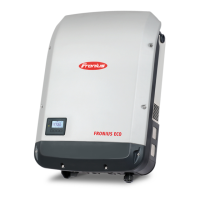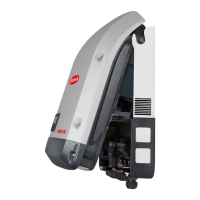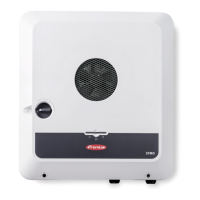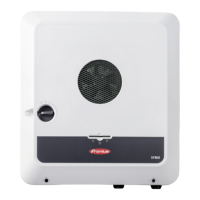1 = highest priority, 3 = lowest priority
DNO Editor – Bat-
tery charge
If you want the battery to be charged from the public grid, you can activate this here.
Depending on what is required by standards or the feed-in tariff rules, it may be neces-
sary to deactivate the setting.
This setting does not affect the charging of the battery by other producers within the
home. It merely relates to the process of drawing charging energy from the public grid.
Regardless of this setting, the battery will still be charged from the public grid if needed
for service reasons (e.g. to protect against deep discharge)
Dynamic power
regulation with
several inverters
Example 1
HYBRID
P
AC nom
=
5 kW
P
AC nom
=
4,5 kW
P
AC nom
≤
P
AC nom
(inverter 1) £ P
AC nom
(hybrid)
Example: 4.5 kW < 5 kW
A Smart Meter is only required for the
hybrid inverter. This must be installed at
the feed-in point.
Hybrid system overview (web page):
Settings – System overview: Meter must
be configured at the feed-in point
Settings – PSC editor:
Dynamic power reduction
Power limit: Limit for the entire system
Total DC system output: 9500 Wp
Max. grid power feed: 60%
Example 2
If there are two Smart Meters in the feed-in branch, the Datamanager and the Fronius
Datamanager (hybrid) in Solar.web cannot be shown combined in one PV system. Two
individual PV systems must be created.
116
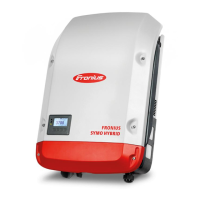
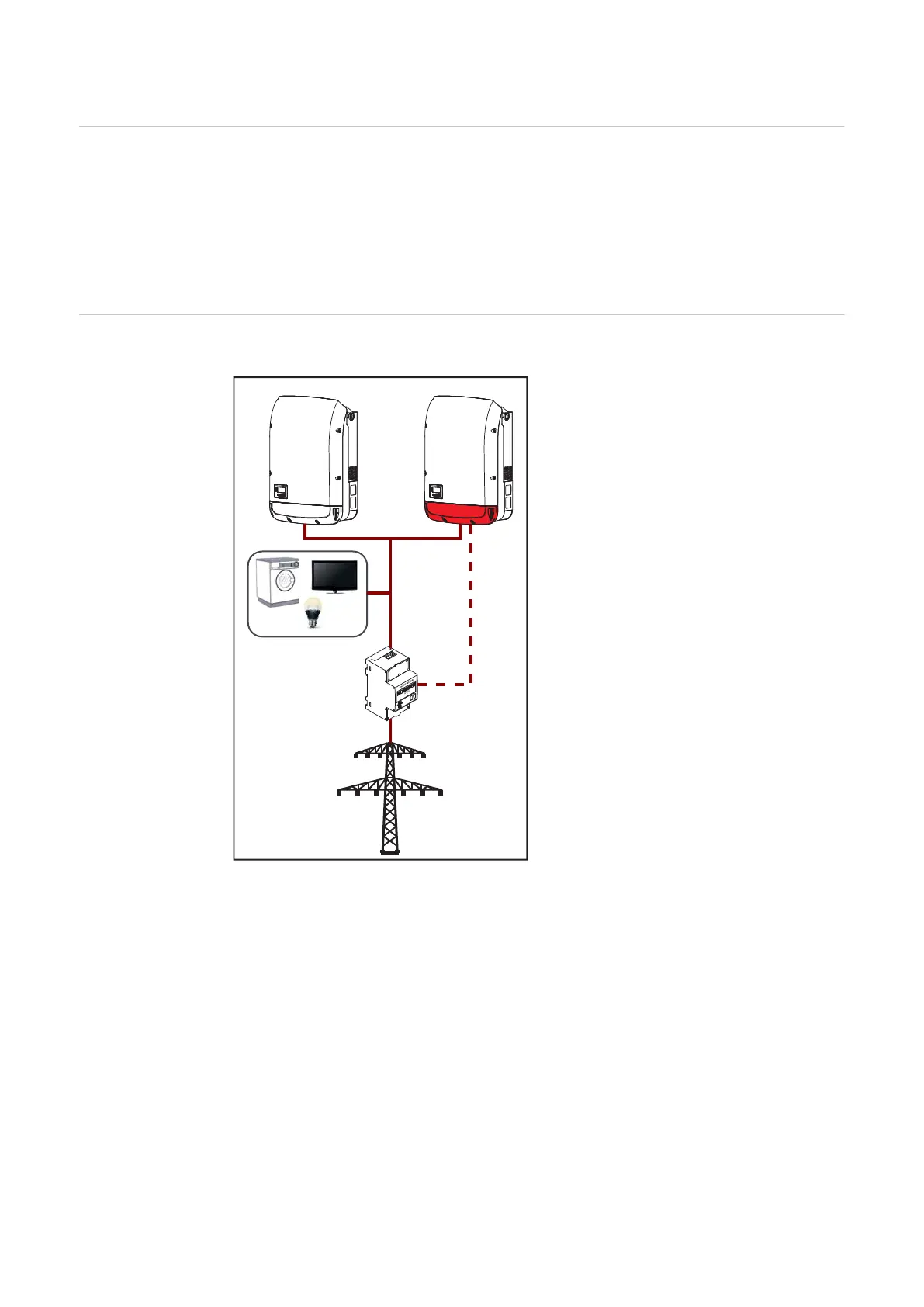